






Canadian Cattle Young Leaders (CYL) is a national youth initiative of the Canadian Cattle Association that provides young people ages 18-35 with industry-specific training and mentorship opportunities.
Each year, 16 candidates are selected to participate in the Canadian CYL Program. The online application process opens in January and the deadline for eligible candidates to apply is generally in late March. Twenty-four semi-finalists are selected from submitted applications and invited to participate in the annual Canadian CYL Selections competition. The competition is traditionally held in conjunction with the Canadian Beef Industry Conference in August, where semi-finalists participate in judged roundtable discussions on timely industry topics.
Once the 16 participants have been selected for the year from the Selections competition, they are matched with a hand-picked expert in the mentee’s specific field of interest for a nine-month mentorship. Mentorship topics of interest can range from sustainable grazing practices to business management, policy development, marketing, advocacy and much more!
The program is highly popular amongst young Canadian beef farmers and ranchers, but is open to all young people ages 18-35 involved in various areas of the Canadian beef

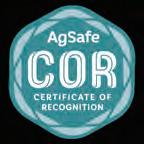

supply chain.
Once candidates are matched with their respective mentors, the mentor/mentee journey begins. Through the creation of an initial roadmap, the mentor and program participant set out the goals they wish to achieve during the program. Program participants are granted a budget of $2,000 to fund their participation in numerous industry events and learning opportunities!
The program year also typically includes an annual Spring Forum event, where program participants from across the country gather for a few days of industry tours and training, giving them the opportunity to build strong relationships with their peers in the program and industry stakeholders.
Participants’ time in the program comes to an end with a graduation celebration held at the following Canadian Beef Industry Conference. Through attendance of industry events, meetings with their mentors, various learning opportunities and the completion of the Beef Advocacy Canada program and Verified Beef Production Plus training, candidates build upon their knowledge base and become highly capable individuals to represent and lead the beef industry into the future.











On offer:
-33 yearling registered Simmental bulls
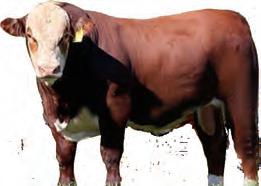
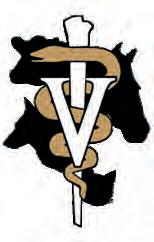

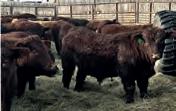

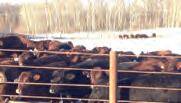

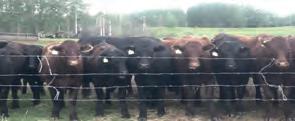




-5 two year old registered Simmental bulls








On offer approximately: -37 yearling registered Simmental bulls -20 commercial bred heifers from FTF influenced bulls, bred back to heifer bulls Lot Viewing – Friday, March 4th, 3pm-8pm

-15 commercial open heifers from Simmental influenced bulls, on offer from Warren & Marcia Day Lot Viewing – Friday, March 3rd, 3pm-7pm


Fallen Timber Farms





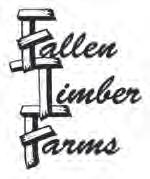
Chet & Jamie Jans
Home Phone: 250-780-2141




Chet & Jamie Jans Home Phone: 250-780-2141


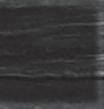

Sale Day Phone: 250-219-8200
info@fallentimberfarms.com

www.fallentimberfarms.com




Sale Day Phone: 250-219-8200 info@fallentimberfarms.com www.fallentimberfarms.com





Common Ground
Gelbvieh Bull Sale
March 16-17, 2023
Olds AB
Online @ oldsauction.com/
rosehill-live
Cowlick Ranch
Olds AB
403-556-5508
cowlickranch121@gmail.com
Stone Gate Farms
Sundre AB
780-581-4510
Darrell.ddhickman@gmail.com
7T Cattle
Ponoka AB
403-588-9281
adam@dayspringcattle.com
Unger Land & Livestock
Olds AB
403-994-1211
lorenunger@gmail.com
Dayspring Cattle
Sylvan Lake AB
403-887-4971
Info@dayspringcattle.com
2023
Tuesday Feb 14th 1:00 pm MST
Hosted @ Royal Western Gelbvieh
15km East of Innisfail
Rodney Hollman cell 403-588-8620
Cody Congdon cell 403-350-5791
royalwesterngelbvieh.com
Online with liveauctions.tv
Offering 55 Gelbvieh, Balancer & Angus Yearling & Coming 2 year olds
Foursquare Farms
Roger & Kim Sayer
Feb 25, 2023
Olds Cow Palace, Olds AB
Online with DLMS
P: 403-875-8418
rogerandkimsayer@yahoo.ca
www.foursquarefarms.com
30+ Red & Black Polled Yearlings for sale

Gelbvieh cattle were developed in the Bavarian region of Germany in the early 19th century. Gelbvieh was first imported into Canada in 1972, instigating the incorporation of the Canadian Gelbvieh Association (CGA) under the Canadian Animal Pedigree Act. 2022 marked 50 years of Gelbvieh in Canada. In celebration a 50th Anniversary History book was published and copies can be purchased through the CGA office.

The CGA has maintained the strong performance heritage of the breed with a policy of mandatory performance records. In cooperation with the American Gelbvieh Association, this has produced a database of well over one million performance records that result in an annual Sire Summary, Cow recognition Program, and contribution to a multi-breed EPD evaluation for all registered Gelbvieh and Gelbvieh influenced animals. This provides a powerful source of documented information for cattlemen raising Gelbvieh on both the commercial and purebred level. Another great resource for information on the Gelbvieh breed and breeders is the Gelbvieh Guide, available online through the CGA website or you can contact the CGA office to get added to the mailing list.
Gelbvieh traits of fertility, calving ease, longevity, milking ability, moderate size and docile temperament have become more important than ever before, making Gelbvieh an optimal choice for crossbreeding programs. Vigorous at birth, Gelbvieh calves wean off heavy and gain rapidly. Documented progeny tests, impressive feed efficiency and lean/muscular carcasses round out the roster of breed’s characteristics that have made Gelbvieh popular with cow/calf operators, feeders, packers and consumers.




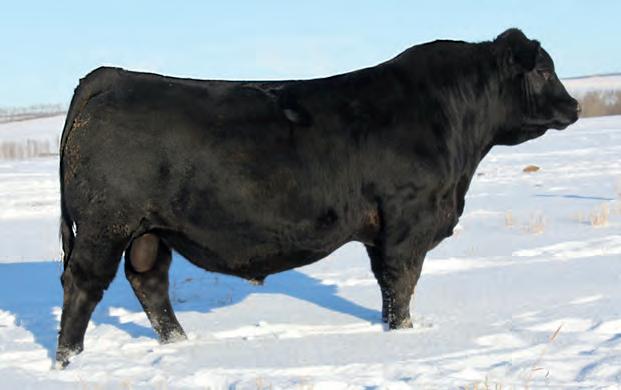



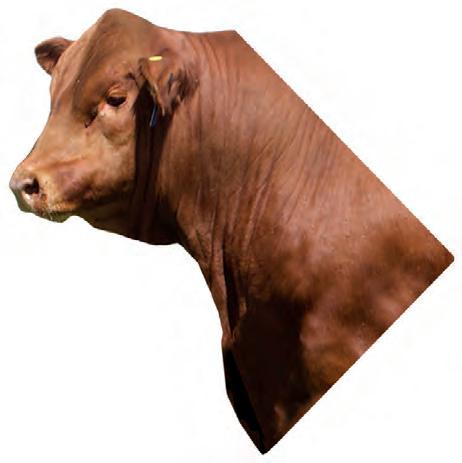
























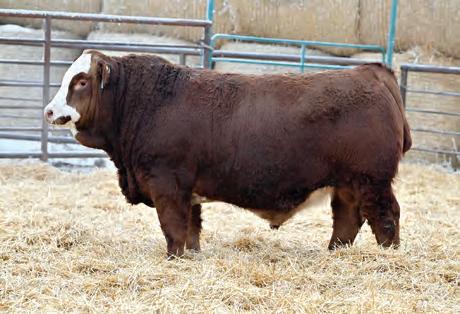







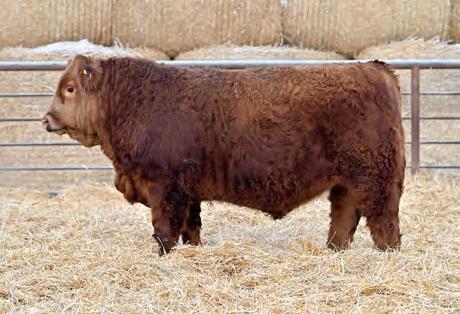













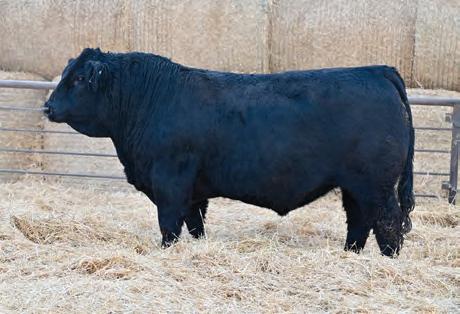



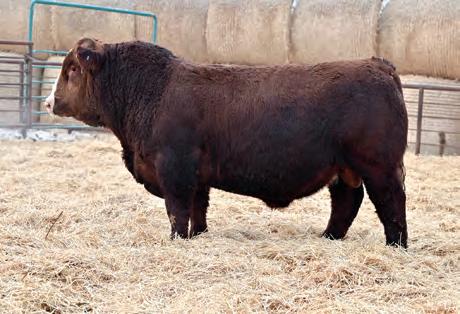

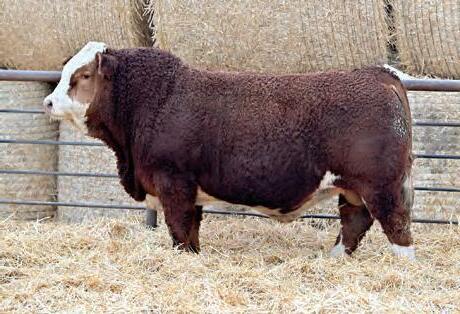

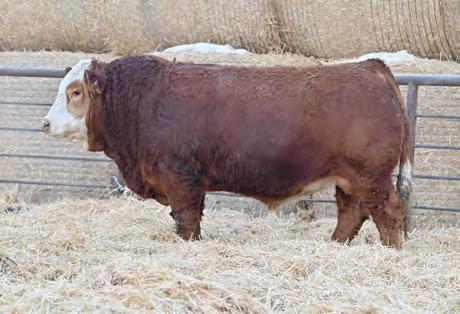








The CCA’s Annual General Meeting in Ottawa brings together directors from provincial member associations to determine policy for the industry.
The meeting also allows CCA the opportunity to meet and discuss industry issues with Ministers, Members of Parliament, Senators and other key influencers at an annual reception held near Parliament Hill. CCA directors elect new leadership at the annual general meeting every year, with the President and Vice President eligible to serve two one-year terms.
2023 Annual General Meeting



March 22 – 24, 2023






Ottawa, ON

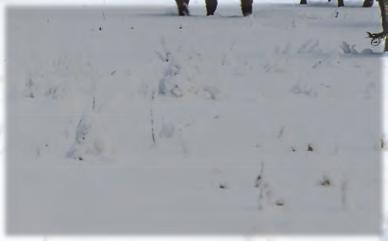

Check back for more details to be announced.








For more information, please contact contact@cattle.ca.



The CCA Semi-Annual Meeting brings together producers and industry affiliates for networking, entertainment, information sessions and policy setting.
The 2023 CCA Semi-Annual Meeting will take place in August 2023. Location and format to be determined.

For more information contact Paula Jenkins at contact@cattle. ca.
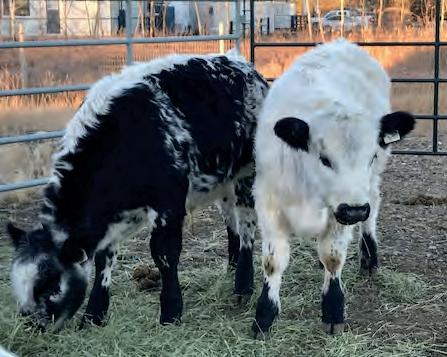
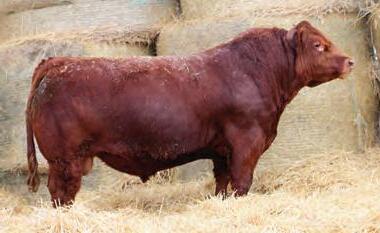
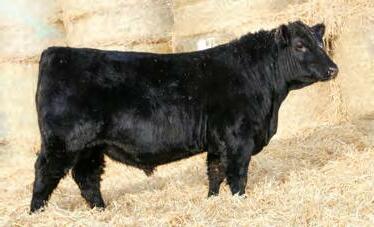






The West County 4-H Beef Clubs want to extend their gratitude to JOANNE

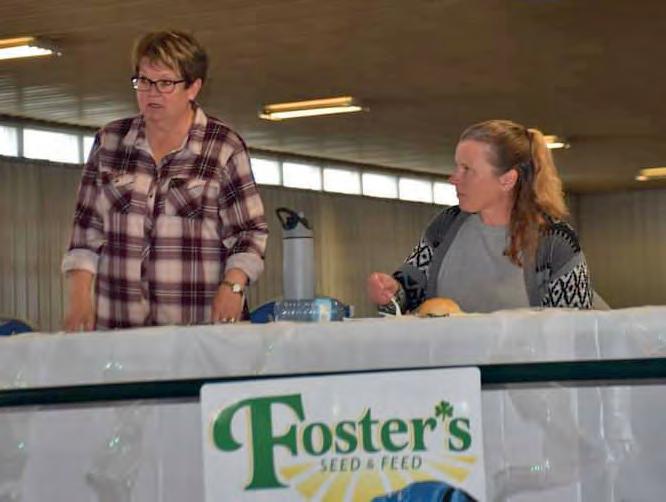

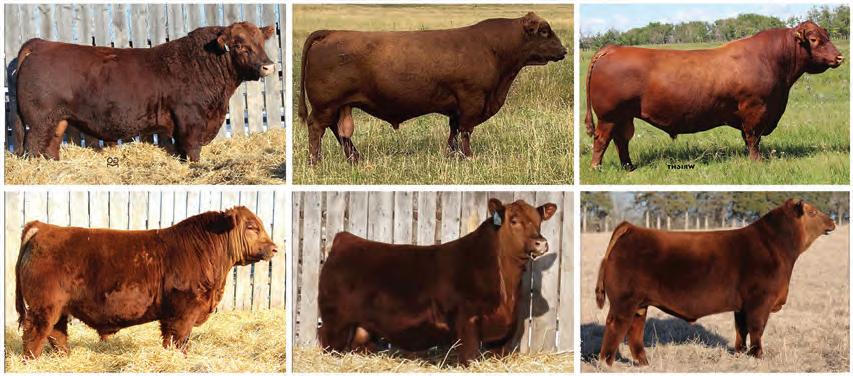
for her 30 years of service.
Joanne was leader of the Beaverlodge Beef Club from 1992 to 1994. After that, she spent the next 28 years, well after her own children were done with 4-H, filling many different roles. From managing Member Diaries, to organizing the Delwyn Postman Memorial Donation Steer Raffle each year, and, most recently, acting as the Treasurer for the West County 4-H Beef Club for the last 7 years.
Joanne’s dedication and passion to 4-H and the community as a whole has been unwavering, and she holds a special place in all our hearts.
We are better because of her. Thank you, Joanne!





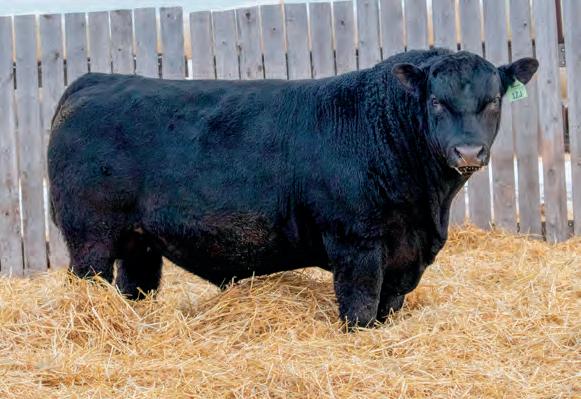
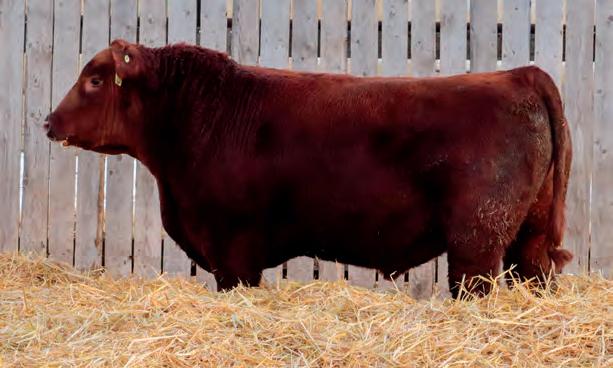


It’s official, Canada’s Ag Day will be celebrated on February 15, 2023! Mark your calendars to raise your fork and acknowledge the ongoing effort and commitment made by each of you.

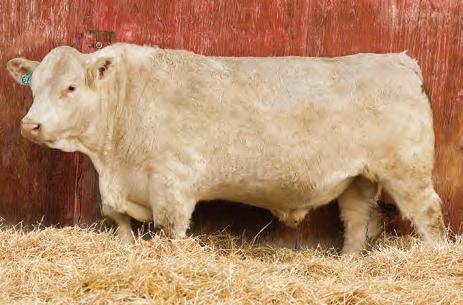



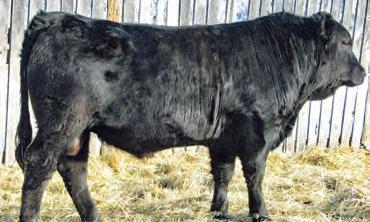
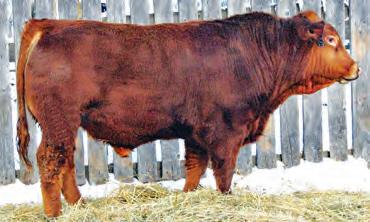


Join our community to engage in conversations about food and agriculture and get the word out on social media across Canada with #CdnAgDay. Remember to keep your best photos and videos on hand to share them when the day comes!

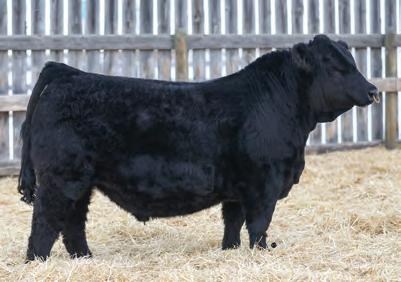






As the global policy conversations come to a close at COP15, the important connection between raising cattle in Canada and collaboration between industry, government and conservation partners, were underscored as critical elements to protecting nature and enhancing biodiversity. Together with our conservation partners, the Canadian Cattle Association (CCA) and the Canadian Roundtable for Sustainable Beef (CRSB) was pleased to have the opportunity to participate in the event as an official observer and as a part of the Canadian delegation, and to share the Canadian cattle industry’s sustainability and biodiversity story.
Much of the focus of COP15 was placed on the adoption of the ‘Kunming-Montreal Global Biodiversity Framework (GBF)’. This is a landmark decision that will shape the future of biodiversity conservation. The framework recognizes that urgent policy action is required globally, nationally, and regionally, to achieve sustainable development and that we must all take immediate action to halt and reverse biodiversity loss.
In Canada, we know beef cattle production is an effective way to conserve grasslands, sequester carbon, and enhance biodiversity.
The avoided conversion and restoration of grassland and riparian ecosystems represent the largest emissions mitigation opportunity in Canada, aligning with the ambitious ‘30 x 30’ targets of the GBF and identified as a key natural climate solution. Beef cattle farmers and ranchers realize they have a critical role to play in solving the twin crises of biodiversity and climate change. Our producers manage and protect these large areas of at-risk ecosystems and our targets to maintain and conserve these ecosystems through continuous improvement, contribute to the outcomes of the GBF.

The intersection of working landscapes and biodiversity had heightened prominence in the discussions at COP15 in comparison to other international events. Farmers and ranchers are proud of the role that cattle grazing plays in supporting the majority of wildlife habitat across Canada while contributing sustainably to global food security with a highly nutritious protein.
“CCA is confident that through collaboration with industry and conservation partners, and the support of the Government of Canada, we are well-positioned to achieve our ambitious 2030 goals and contribute positively as a nature-based solution provider. We look forward to working in partnership to conserve and maintain the important ecosystems through beef cattle production,” sizzles Duane Thompson, Environment Committee Chair, Canadian Cattle Association
“The Canadian Roundtable for Sustainable Beef (CRSB) advances, measures and communicates continuous improvement in sustainability of the Canadian beef value chain. Our Certification Framework has an indicator centered around biodiversity, developed through a multi-stakeholder approach, to maintain or enhance wildlife habitat managed by cattle producers. We also know that lands used for beef cattle production represents 68 per cent of the wildlife habitat capacity on the agricultural landscape in Canada. We look forward to collaborating with members and partners to advance our common conservation goals,” beefs up Ryan Beierbach, Chair, Canadian Roundtable for Sustainable Beef
“Grasslands that are managed responsibly for grazing cattle can also support significant populations of grasslands birds. This group of birds is declining faster than any other bird group in Canada, which is primarily due to habitat loss. As the achievements of COP15 are celebrated and the measures to recover nature are beginning to be implemented, Birds Canada urges lawmakers to recognize and support the vital role that grasslands play in addressing the twin global crises of biodiversity loss and climate change,” simmers Ian Cook, P.Ag, Grassland Conservation Manager, Birds Canada.
Collaboration is key in conserving and enhancing biodiversity
lands managed by beef producers
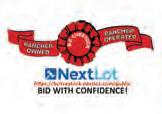
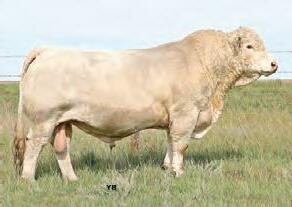




1% of farms have over 500 beef cows, with 483,070 beef cows, 13% of the herd.
with 1.21 million beef cows, 45% of the herd.
2021 Census of Agriculture Results rounded to nearest whole number.
Canada fed 3.2 million cattle in 2021 (finished to market weight) up 3.7% from 2020. Canfax,

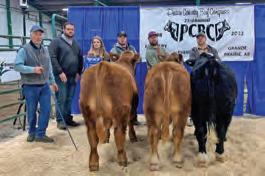
Western Canada finishes 76% of all fed cattle in Canada. Canfax
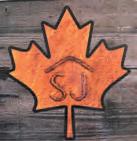
In 2021, Canada produced 3.54 billion pounds of beef, up 3.8% from 2020. Canfax Research Services
3.54 Billion Pounds
“Stored crop is worth caring for,” says Neil Blue, provincial crops market analyst with the Alberta government. “While lower than last year’s prices, crop prices are still historically high, and worth protecting in storage.”
After being placed into storage, grain and oilseeds will respire for a month or more, and this respiration can release moisture, which in turn can lead to spoilage. Dense crops like canola are particularly subject to storage problems, although all crops with moisture can spoil.

up moisture along the way. As the warmer moisture-laden air encounters cooler grain near the top of the crop mass, heating can begin. That is why spoilage tends to occur near the top of the bin during the winter.
Canola harvested with either green canola or cereal seeds, or green plant material increases the risk of spoilage. Although canola for marketing purposes is considered dry at 10% moisture, safe longerterm storage moisture levels are below 8%. If it is binned at high temperatures, canola can even spoil at 6% moisture.
receipts in 2021 totaled $10.2 billion, up 11% from 2020. Statistics Canada
Beef production contributed $22 billion to Canada’s GDP (2019-2021 average).
Most of Alberta had a very dry harvest with most of the crop combined at officially dry moisture levels. However, some of the harvest days were quite warm, and those warm crops placed into storage have a larger temperature differential compared to the winter temperatures. As the outside air becomes cold, the temperature of the outside of the crop mass in the bin cools first. This causes a temperature and moisture migration down the bin walls and then into the bottom centre of the grain mass.
The air then moves up through the centre of the bin, picking
Aerating crops during the respiration period will reduce or eliminate the chance of spoilage. If aerating is not available, an alternative is to “turn” the canola by removing some canola from each bin, let it sit on a truck for a day or more, then return that canola to the bin. A recommended time to do this is when the outside temperatures are cold. Aerating and turning will help to even out the temperature of the stored crop and break up the natural temperature and moisture flow within the bin.

Cases of spoiling crops have already occurred this winter

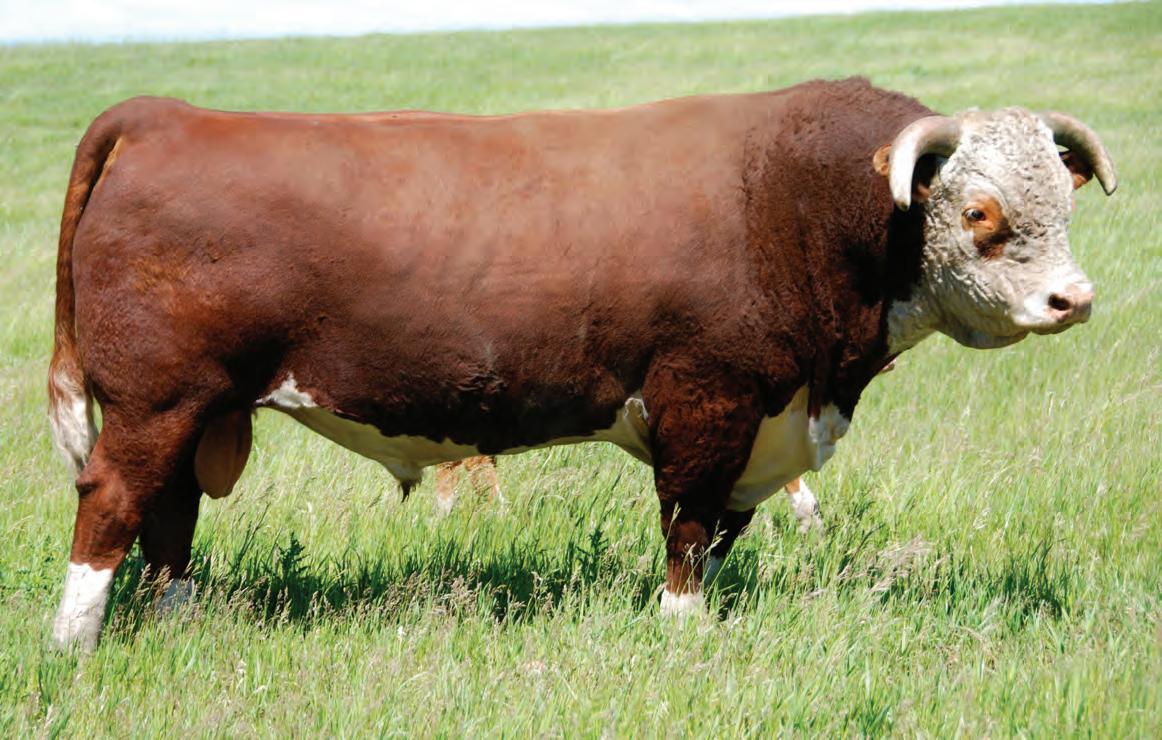

Making the In-Person Peace Country Beef and Forage Assoication’s Annual General Meeting
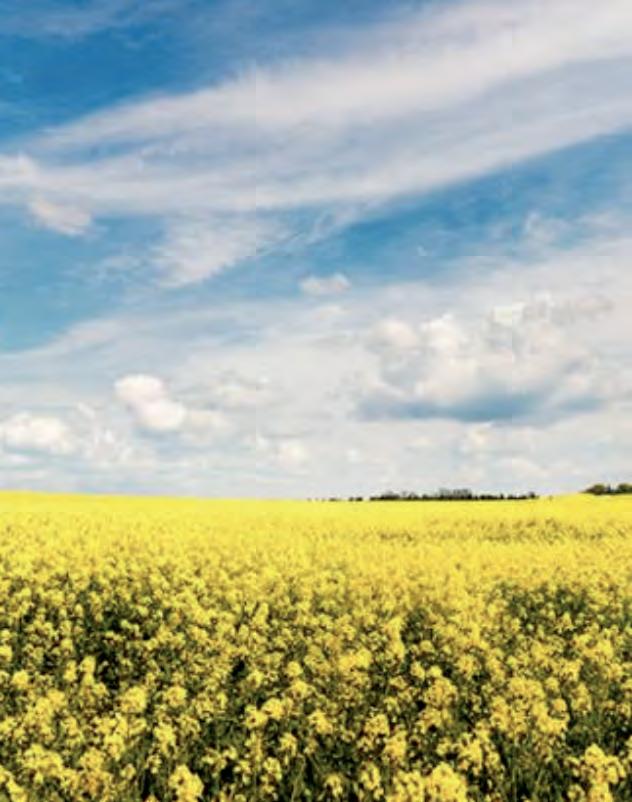

Saturday, February 25th in Rycroft
Agenda:
3:30pm: Doors Open
4:30pm: Business Meeting
5:30pm: Steak Supper
Location: Rycroft Ag Society Hall
Come out for our business meeting and stay for a research update, a social, and a steak supper!
Membership must be current to participate in the meeting or hold a director position. Click the




button below to prepay, or if you would prefer to pay in-person on the day of, please contact Johanna to register for the meeting by calling 780-523-4033.
Register & Renew Membership Now!
If you have questions about the PCBFA Board Member Experience, please contact Allan McLachlan at 780-834-7399.
If you would like to let your name stand, but unable to be present at the meeting, please send a letter of intent with someone attending the meeting, or email executivedirector@pcbfa.ca

Aberdeen Angus cattle were first imported to Canada in 1860. The breed was strengthened with further imports from Scotland and the cattle have been registered by the Canadian Angus Association since 1905. Since 1960, animals have been exported back to Scotland and around the world. All Angus animals registered in Canada are 100% purebred and all walking sires are DNA tested and sire verified to ensure the accuracy of our records.
Red and black Angus are both registered in one herd book, but the registration paper easily indicates the colour of each animal. The breed has experienced a significant growth in demand and size and is now the largest and fastest growing breed in Canada.



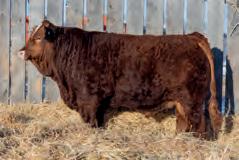

Angus animals offer numerous economic advantages in addition to their solid red or black colour. They are naturally polled, easy keeping and the females are natural mothers. Over 98.5% of all registered Angus calves are born unassisted, weaning weights usually exceed one half of the cow’s weight. It is not unusual for a cow to remain active and healthy for fourteen or more years.
Angus cattle are extremely fertile but the increased demand for Angus genetics in Canada has been because of the quality of the carcass. Cattlemen using Angus with superior marbling ability open the door for improved beef tenderness and increased consumer acceptance of beef.

Canadian Angus breeders have worked cooperatively with the American Angus Association to improve our Performance Program and provide more accurate genetic evaluations on both Red and Black Angus. All breeders are encouraged to weigh and measure cattle and submit performance data that will provide customers with accurate information to select suitable genetics for their breeding program.
Angus is Canada’s leading beef breed because Angus and Angus-cross cattle make sound economic sense, in the breeding pasture, the feedlot, at the packing plant, and on the table.

For more information about the Angus breed, go to the website of the Canadian Angus Association: http:// www.cdnangus.ca



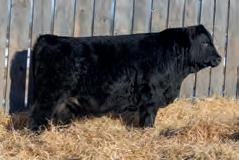

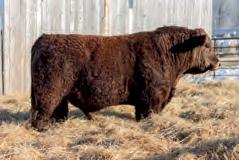
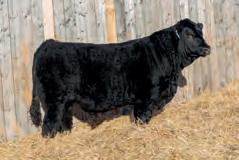
Blonde d’Aquitaine arrived in Canada, from France, in the early 70’s at the end of the importation era of continental cattle from Europe. At the time of the first imports, the Blonde breed in France was one of the smaller breeds in number.


Blondes are now the third largest beef breed in France. All registered fullblood Blondes in Canada are parentage verified by DNA.
For more information about the Blonde d’Aquitaine breed, go to the website of the Canadian Blonde d’Aquitaine Association: http://www.canadianblondeassociation.ca
The German word “Braunvieh” means “Brown Cattle”. Braunvieh enjoy the status as being one of the oldest pure breeds, which originated in the alpine regions of Switzerland. Their colour is of various shades of brown with males generally being darker and the calves are born almost white, darkening with age. They typically have dark pigmentation around the eyes, black noses with light-coloured bands around the muzzles, and strong black hooves.
Braunvieh is a medium-sized, dual purpose breed, which excels in maternal traits and docility. They are very hardy, adapting to extreme cold or heat and are known for their longevity. About 40% of the cattle in Switzerland are Braunvieh and, due to their high performance and exceptional tolerance to various climates, they are raised in more than 60 countries, from the Arctic Circle to the tropics, at altitudes varying between sea level and 12,500 feet.
The history of Braunvieh can be revisited through documents preserved in monasteries, whose occupants took great pride in raising and improving these cattle. Among these historical files, notes indicate trading of brown cattle in the eighth century and provide records of performance dated as early as 1315. Standardized production records on milk and meat performance were
established in the 19th century.
In 1869, the first export of brown cattle took place to the U.S., where they became the foundation in the development of the Brown Swiss dairy cow, by constantly selecting for high milk production.

In 1968, the first Braunvieh from Switzerland arrived in Canada and there have been several subsequent importations of live animals and semen and later of embryos and the result has been the development of Canadian Braunvieh that have been marketed and proven world-wide.
Braunvieh, having been bred pure for centuries, offer complete outcross genetics for other breeds and have repeatedly proven themselves in crossbreeding programs. Braunvieh add thickness, early maturity and good gains, which makes their offspring perform very well in feedlots.

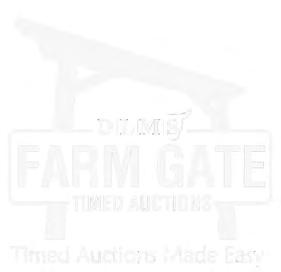
Most of the Braunvieh herds can be found in Alberta, with numbers increasing in other provinces. Highly profitable production, long productive lives, docile temperament, wide range of adaptability and rapid growth are all distinctive characteristics of this breed.
For more information about the Canadian Brown Swiss and Braunvieh breed, go to the website of the Canadian Brown Swiss and Braunvieh Association: http://www.browncow.ca


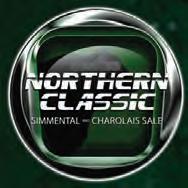



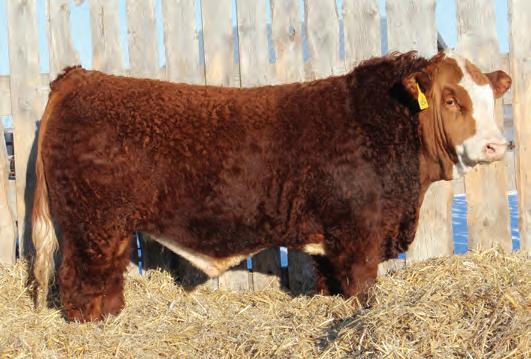


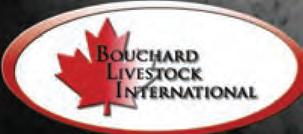




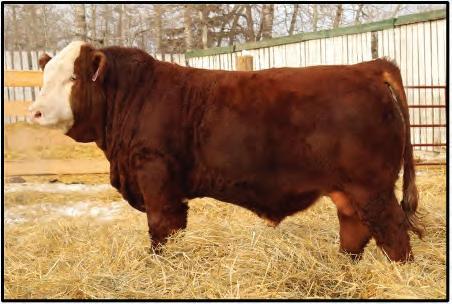




Charolais were first imported to Canada in 1956 from the United States. Later, cattle were imported directly from France. In 1959 the Canadian Charolais Association (CCA) was formed and in 1960 it was formally recognized as a Breed Association under the Animal Pedigree Act of Canada.
The CCA is a non-profit organization that derives funding from member subscriptions and the Whole Herd Enrolment (WHE) fees. The Canadian Charolais Association operates a number of performance testing initiatives on behalf of its members. However the backbone of the performance program is Whole Herd Enrolment in which breeding and calving information is tracked on each cow every year.
This tracking ensures the highest possible level of accuracy in Charolais pedigrees and allows breeders to monitor reproductive traits. Research has shown that fertility is the most economically important trait in beef production and total herd reporting sets Charolais apart as an industry leader. All performance data from the past is utilized in producing a high accuracy, scientifically proven Canadian Expected Progeny Difference (EPD). EPD’s indicate genetic differences in cattle and may be used
for comparison across herds. Due to the diverse landscape and the extremes in both temperature and precipitation in Canada, Canadian Charolais are highly adaptable to not only the Canadian environment and production systems but to climates and production systems throughout the world. Charolais cows have performed well under a variety of environmental conditions and are selected as very structurally sound animals with exceptionally good feet and strong legs. This is important when cattle are managed in large herds and on vast areas of land where walking distances for feed and water is necessary.
It has been said that no other breed has impacted the North American beef industry so significantly as the introduction of Charolais. Canadian Charolais are highly compatible with the indigenous cow base and the cross is second to none. In Canada the Charolais crossbred calf receives a premium price at the auction market.

For more information about the Charolais breed, go to the website of the Canadian Charolais Association: http://charolais.com
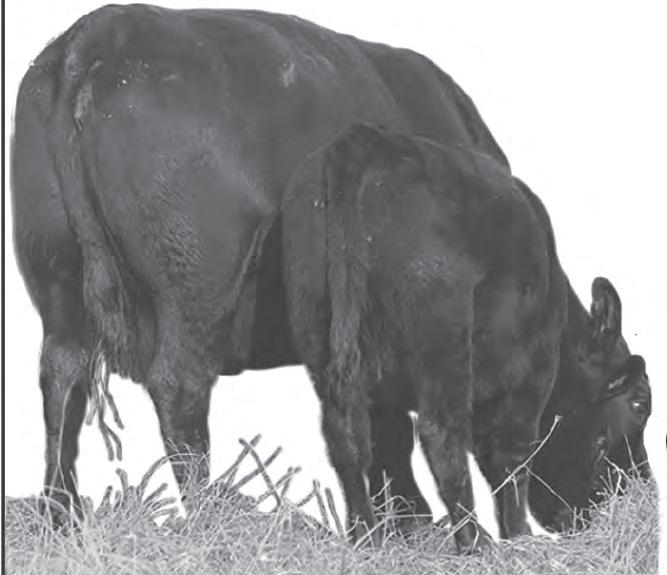
The first Lowline cattle in North America came to Canada in 1996. Interest in them has grown steadily since.

The Canadian Lowline Cattle Association was established in 1997. Fullbloods and percentage cattle are now recognized in separate herd books. Lowline cattle were developed by the Trangie Agricultural Research Centre in NSW, Australia.


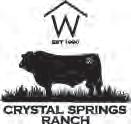
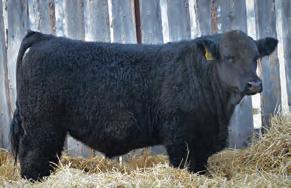



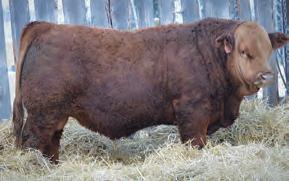

In 1929, a choice Aberdeen Angus herd from Canada, supplemented by additional animals from the USA and Scotland, was purchased by the Australian government to form the foundation of a research herd. From 1929 to 1963 this Angus research herd was prominent in the Australian showing circuit and won many awards. The herd was closed to outside genetics in 1964, and between 1974 and 1992 research was performed to investigate the efficiency of converting feed to beef within groups of different sized animals.

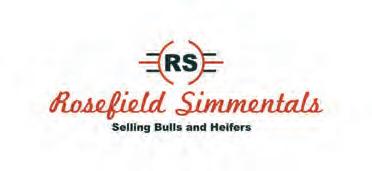
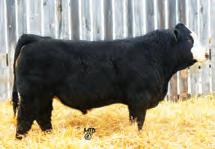
The Angus herd was divided into three groups; the “High Line”, the “Low Line” and a random “Control Line”. A detailed evaluation of weight gain, feed intake, reproductive performance, milk production, carcass yield and quality and structural soundness was carried out. Through 20 years of research, the smaller “Low Line” cattle were found to be extremely efficient converters of feed to beef while maintaining performance in the other characteristics studied. Interest in the smaller animals was great, and a new breed was created when the herd was dispersed to private breeders in 1992.
Lowline possess traits that will help them excel in the cattle industry. They are extremely hardy, naturally polled, black or red in color, and small framed. At all stages of their growth they are about 60% of the size of normal beef cattle. Lowline cattle mature early. They are easy calving and docile. At birth calves average 40 to 50 pounds. Calving losses are extremely low and even heifers have great ease in calving.
The dams make excellent mothers and provide ample milk. Cows at maturity average about 100 cm at the hip while equivalent age bulls stand about 110 cm. Lowline are extremely efficient grass feeders and can even be finished on grass. They exhibit rapid early growth. Carcasses yield high, with reduced fat but greater marbling. Cuts are smaller which is attractive to the health conscious consumer.
An increasing number of commercial breeders are committing to downsizing their cattle. They want cattle that are moderate framed with excellent muscling ability and performance. Lowline bulls have proven to provide this consistently. Crossing heifers with Lowline sires produces aggressive calves that are born easy. Fewer calving difficulties mean more calves and a higher percentage of cows returning to calf.

Half blood calves average 65 pounds but wean off heavy with high yielding carcasses and consistent marbling. Lowline bulls in a commercial herd provide easier handling, calving ease, increased stocking rates, increased feed efficiency and high yield quality carcass characteristics. The ease and profitability of beef production increases once the frame score of the herd is reduced.
For more information about the Lowline breed, go to the website of the Canadian Lowline Association: http://canadianlowline.com
The Canadian Galloway Association represents three breeds: Galloways, Belted Galloways, and White Galloways. All three breeds come in black, dun, or red color. Galloways were imported into Canada in 1853, Belted Galloways were imported around 1950, and White Galloways were imported in 1966.
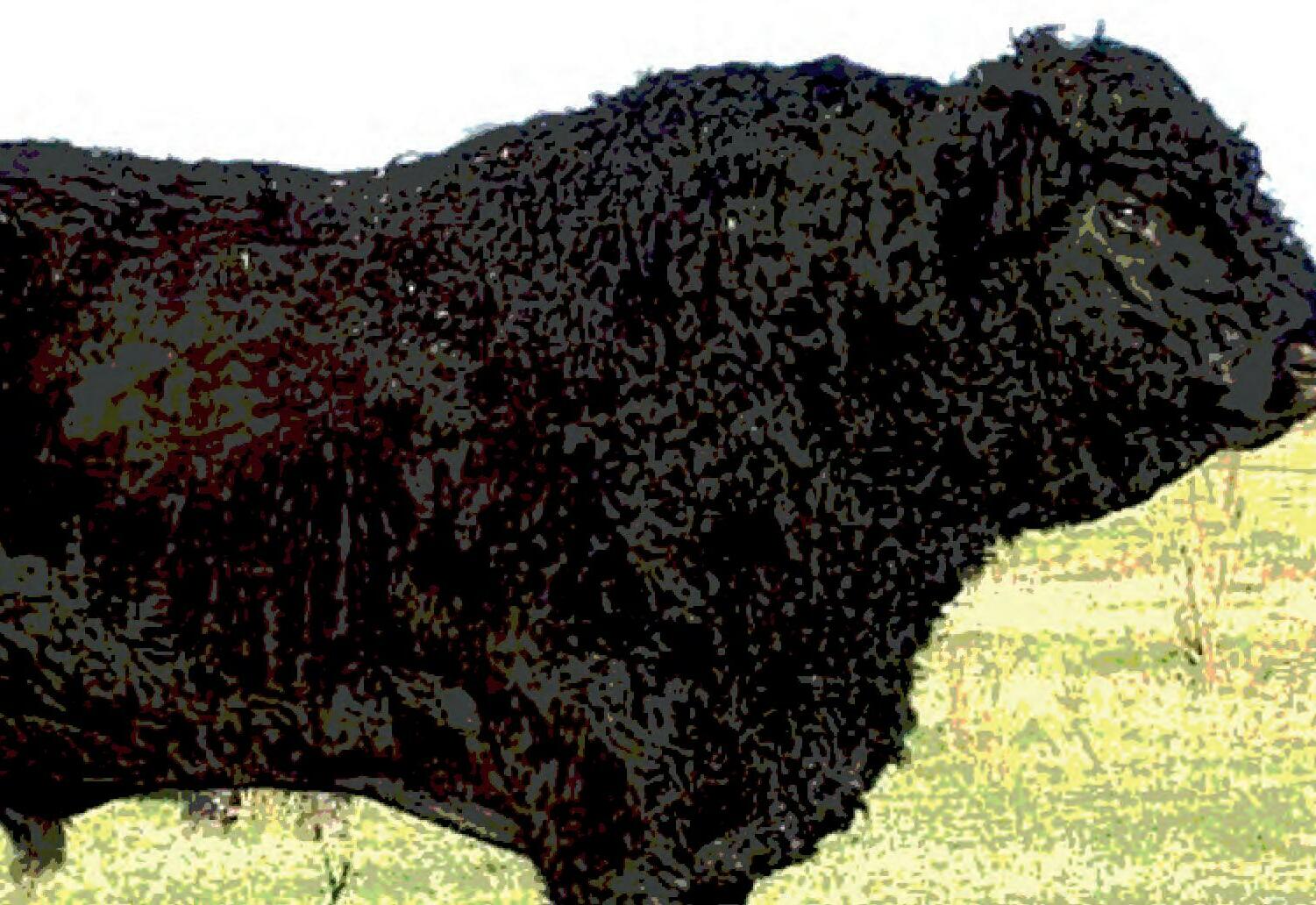

A double coat of hair in the winter helps to reduce feed intake and therefore lower costs and helps produce flavourful meat, lean yet-well marbled without excessive external fat. The breed is naturally polled and will eliminate horns from the next calf crop. Feeding tests at Olds College in Olds, Alberta over the last 21 years have shown that Galloway steers had excellent feed conversion rates and produced excellent carcasses.

For more information about the Galloway breed, go to the website of the Canadian Galloway Association: http://www. galloway.ca
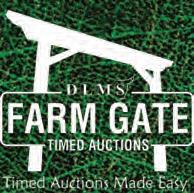
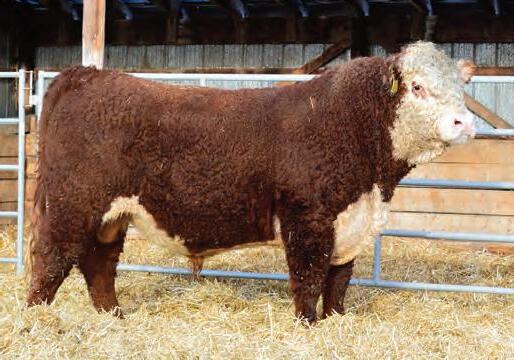











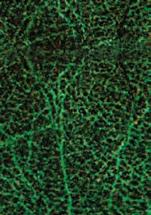
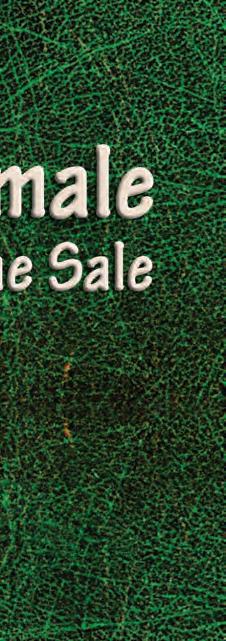


Hays Converter is the first beef breed developed by a Canadian livestock producer which was recognized as a pure breed and registered under provisions of the Animal Pedigree Act in Canada. Since its conception, the Hays Converter has produced superior animals with selection based solely on performance.

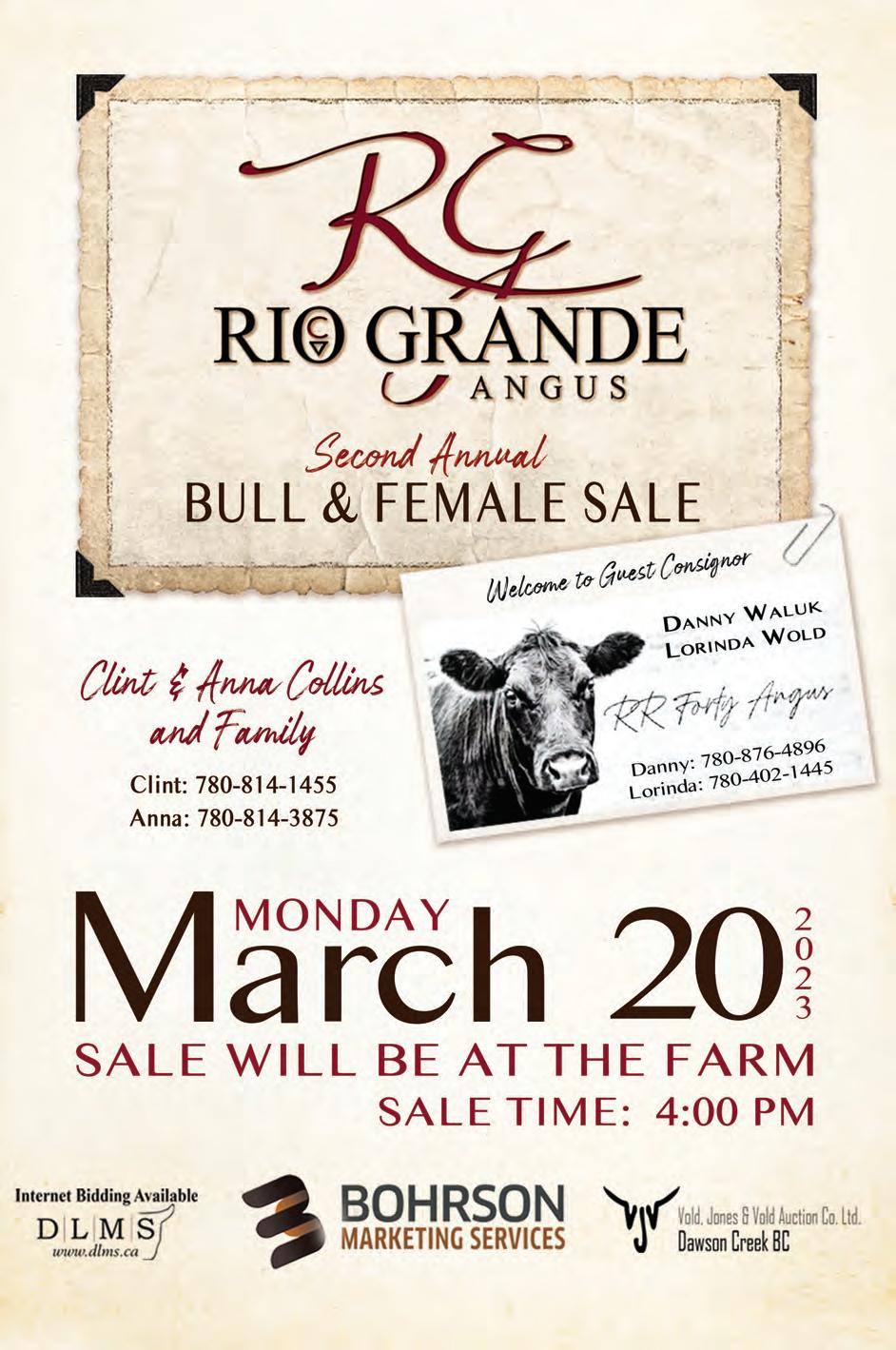
Hays Converters are larger, well-fleshed and longbodied. Strong legs and good feet add hardiness and longevity. Particularly noticeable are the excellent udders of the cows. Mature females weigh between 1250-1450 pounds and mature bulls average between 2200 and 2400 pounds in breeding condition.
Hays Converter cows produce abundant milk, calve easily and wean a 550 to 650 pound calf.
Hays Converter cows mature early, breed early and produce outstanding calves yearly regardless of the breed of the sire they are mated to an excellent cross.
For more information about the Hays Converter breed, go to the website of the Canadian Hays Converter Association: http://www.clrc.ca/haysconverter.shtml

Since the first importations to Canada, Simmental has grown in popularity and has become one of the nation’s most influential breeds. Outstanding growth and performance, combined with unbeatable milk and mothering abilities has resulted in the superior Canadian Simmental beef animal of today.
The Simmental female is recognized globally as one of the best mother cows in the commercial cattle industry. Cattlemen have found them to be profitable, docile animals that possess superior carcass characteristics. These attributes have positioned Simmental as the breed of choice in cross-breeding programs with all other cattle breeds. The unparalleled success of Canadian Simmentals has resulted in them being exported to many countries around the world.
The Canadian Simmental Association (CSA) is the national organization focused on the development of the breed and its distinctive strengths and is continually working to deliver services that enhance the breed’s performance and marketability. Through the CSA’s performance and “Total Herd” data recording programs, breeders benefit from having accurate, complete and up-to-date records that can be used to identify cattle within a herd and within the breed that excel in specific traits.
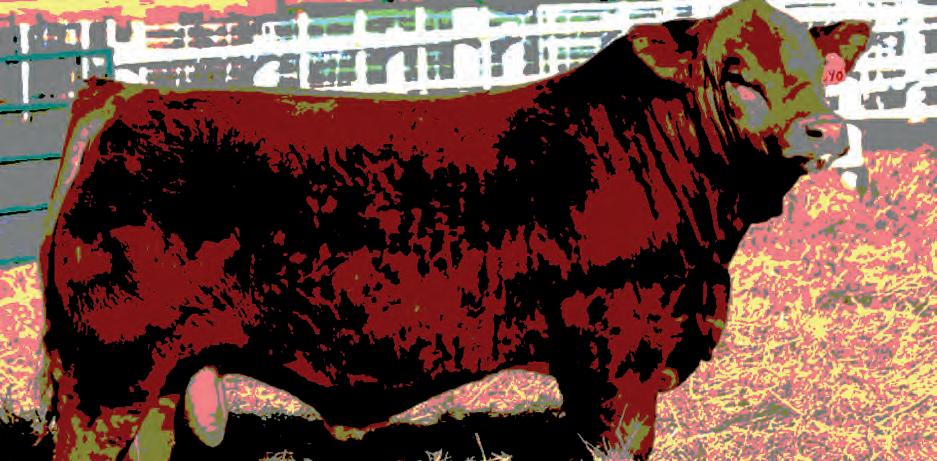
These records also enable the CSA to continue to develop programs that assist cattlemen in identifying and selecting cattle that excel for various economically important traits; ultimately strengthening the breed and creating a superior animal. Our programs lead the industry in the development of tools that support and promote the advancement of not only the Simmental breed but also the future needs of the beef industry.
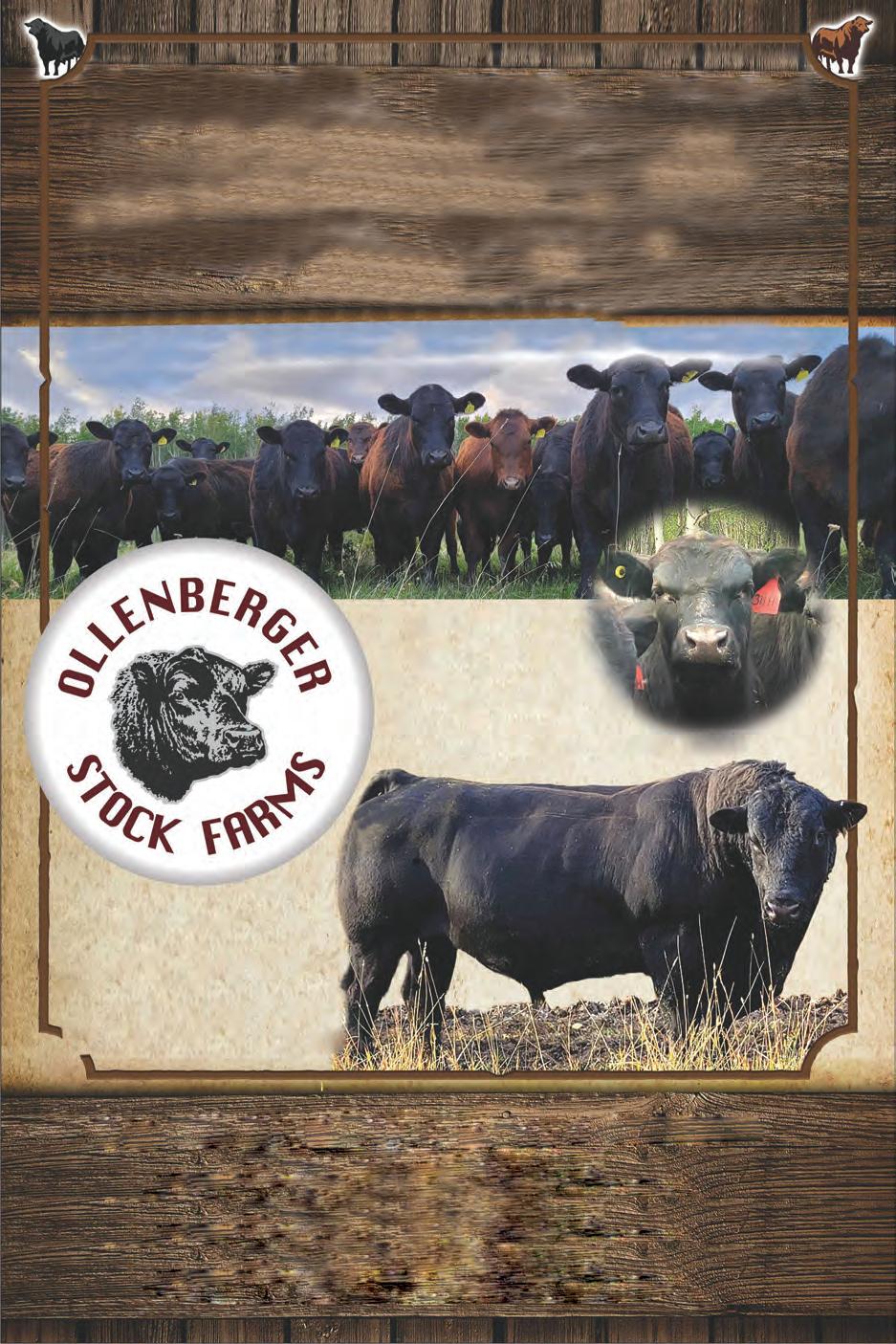
The selection and breeding programs implemented by Simmental breeders and the CSA, along with the superior genetic attributes of Simmental cattle, have all contributed to the present-day success of the breed.
For more information about the Simmental breed, go to the website of the Canadian Simmental Association: http://www.simmental.com



The Maine-Anjou breed originated in France in the 19th century, taking their name from the Mayenne and Anjou river valleys in which they were developed. In France the breed has evolved as a dual-purpose breed, where the cows are selected for their milk production, and bull calves are fed for market. The traditional colouring is very dark red with white markings on the head, belly, rear legs and tail. White on other parts of the body is also common.

The first Maine-Anjou arrived in Canada in 1969 and later through artificial insemination the breed entered the United States. In 1970, the Canadian Maine-Anjou Association was formed. Over the past 35 years in Canada, selective breeding has: reduced the frame size of both fullbloods & purebreds, drastically reduced birthweights, tightened up the front end, thickened up the back end, developed a polled feature in both fullbloods & purebreds and developed multiple colours due to the recessive fullblood colour gene, resulting in the traditional red & white (fullblood) colouring, solid black, solid red and other colour patterns.
Advantages to breeding Maine-Anjou are high rates of gain, feed efficiency, adaptability to climatic extremes, superior carcass quality, docility, and smooth muscling. Bulls are known for


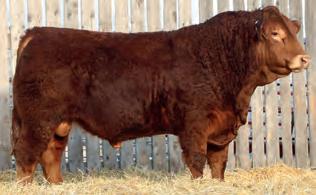


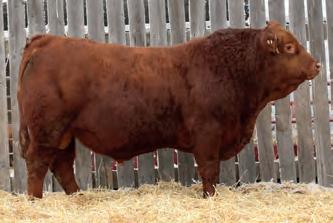
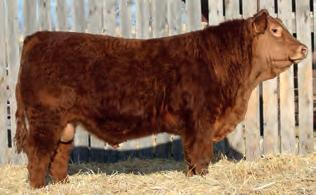
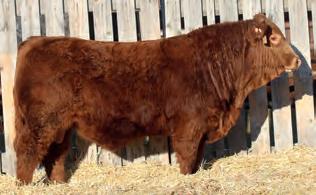
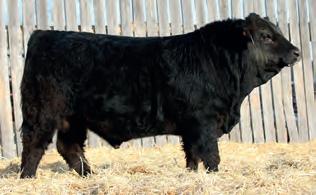
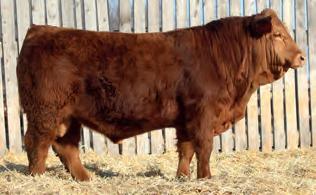












being: high gainers, with a quiet disposition, sound conformation and the ability to be horned, polled or scurred. Females are recognized for their: quiet disposition, strong milking ability, maternal instincts, extreme longevity (10 years or more), easy calving ability and high fertility.

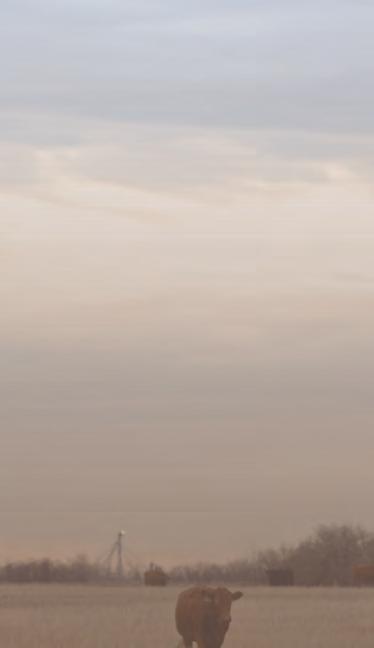



Crossbreeding with Maines adds: stretch, growth rate, quiet disposition and more pounds at weaning to a herd. Maines can also be utilized to breed for or select against other specific traits. Crossed with white-faced cattle, the Maine influence produces dark pigmentation around the eyes. This reduces the occurrence of cancer eye and pink eye. The recessive red gene can be utilized to maintain your preferred colour pattern. Maine’s’ performance at tests and in shows has repeatedly shown that Maine-Anjou genetics can be advantageous to any herd!
For more information about the Maine Anjou breed, go to the website of the Canadian Maine Anjou Association: http://www.maine-anjou.ca

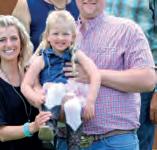





Canada fed 3.2 million cattle in 2021 (finished to market weight) up 3.7% from 2020.

Western Canada finishes 76% of all fed cattle in Canada. Canfax

In 2021, Canada produced 3.54 billion pounds of beef, up 3.8% from 2020.

3.54 Billion Pounds
Cattle and calf cash receipts in 2021 totaled $10.2 billion, up 11% from 2020. Statistics Canada
Beef production contributed $22 billion to Canada’s GDP (2019-2021 average).
, Canadian Beef Breeds Council

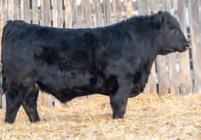


• Get More Muscle For Less!
• LIMOUSIN – the genetic leader for muscle, growth, efficiency.
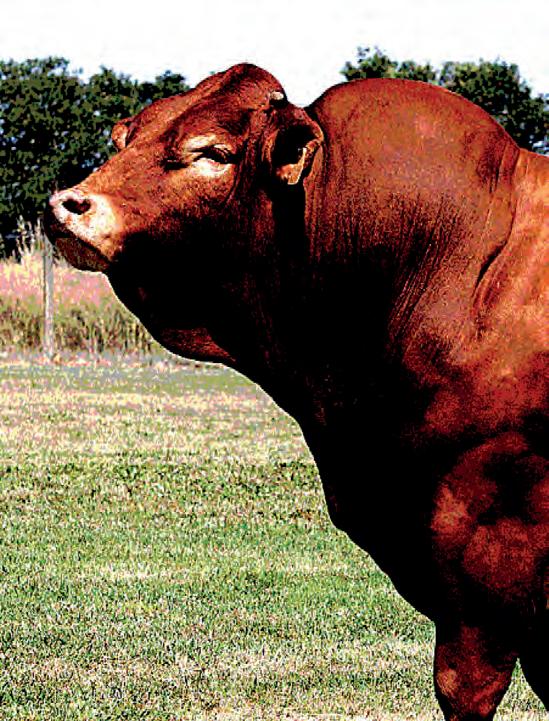

• Best adapted continental breed for the case-ready beef industry.
• Proven as the top breed for feed conversion.
• Superior muscle
• High weaning and yearling muscle growth with moderate birth weight.
• Highest red meat yield of any major breed.

















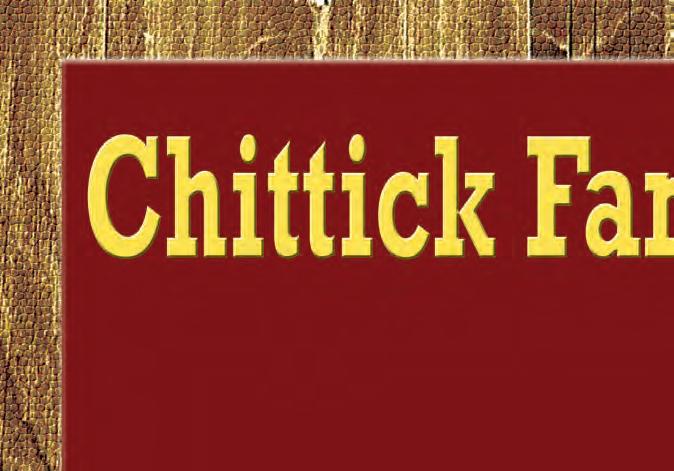
• Uniform size and color



• Best Cross with British Based Females
• Carcass Champion, Canadian Western Agribition for 28 consecutive years.


• Superior Canadian Health status.
• Exceptional pedigree integrity*
*The Canadian Limousin Association carries the only Full French Limousin Herd book in the world that guarantees every single registered Full Blood animal is parent verified by DNA genotyping or bloodtyping.

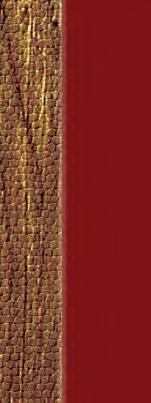
Imported to Canada in 1968 from France, Limousin is one of the five major breeds in Canada and in the United States. The Limousin breed has an important economic role in today’s beef industry. Known throughout the world as the carcass breed, Limousin cattle excel in feed efficiency and have proven to consume less than other animals of the same size and yet perform to equal or superior levels. The Limousin female is appreciated in commercial production for her easy maintenance, her fertility and milking ability while Limousin sired calves are sought after for
their feed conversion and high quality carcass. This genetic achievement is the result of selection based on carcass and residual feed intake research and development throughout the North American Limousin population.

The Canadian Limousin Association (CLA) is a non-profit, member-owned organization. Our primary function is to maintain the pedigree herdbook of Limousin cattle in Canada. We are committed to the improvement of the Limousin breed by way of performance programs, research, education, advertising and promotion, and export.


For more information about the Limousin breed, go to the website of the Canadian Limousin Association: http://www. limousin.com

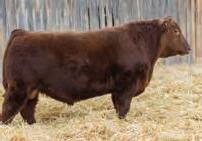


The Speckle Park breed is a Canadian creation. Speckle Park were created and developed in two western Canadian provinces – Saskatchewan and Alberta. Speckle Park as a breed consistently produce moderate sized well marbled carcasses with a minimal fat cover. Speckle Park do all of this in a harsh winter environment on very basic food stuffs. Speckle Park are now also at home in Australia, New Zealand, Ireland, England and the United States. Often described as “the beef breed with the colour bonus” SP have a range of spectacular colour patterns. The “classic speckled” pattern is black sided with a white top line and underline, a black or grey head and spots on the
rear quarters like the Appaloosa horse. The black sides may be broken into many smaller black spots of various sizes on a white ground. Some are white with black points on the nose, ears, skin around the eyes, and feet and legs. Teats are black. Speckle Park also produce some solid black progeny. All of the colour patterns have pigment in the right places for sun and snow. Speckle Park also grow extremely heavy coats in winter and then slick off quickly for the spring and summer.
Speckle Park are moderate sized animals. Mature cows typically weigh 545 kg (1200 lbs), and mature bulls weigh 910 kg (2000 lbs) or a bit more. Calves average 34 kg (75 lbs) at birth
and wean between 250-260 kg (550 –575 lbs). Finished carcasses on the rail typically have an average weight of 330 kg (725 lbs).
Speckle Park also bring to the cattleman many other highly desirable traits: polled, early fertility, calving ease, vigorous calves, milking ability, and manageability of cows and bulls.
Speckle Park were developed over a period of fifty years and are now a distinct pure breed with a closed herd book as stipulated by the Canadian Ani-
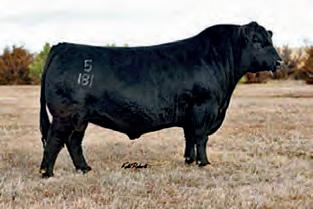

mal Pedigree Act. The breed’s genetic base is British and derives primarily from black Angus, a Teeswater Shorthorn and an unidentified white bull with coloured points.

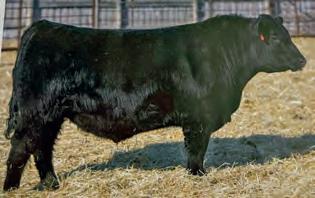

For more information about the Speckle Park breed, go to the website of the Canadian Speckle Park Association: http://www.canadianspecklepark.ca
stout, big topped, hairy, nice necked, and good looking. His dam,
is perfect uddered, angular, deep, square and is everything an Angus female should be.
Salers are considered to be one of the oldest European breeds, whose roots can be traced to 16,500-yearold cave drawings found near the town of Salers in the South Central region of France, the Auvergne, in the heart of the volcanic area of the Massif Central. The rough terrain, poor soil and harsh climate combined with the area’s isolation has contributed to a genetically pure breed of cattle with bred-in range ability to thrive almost entirely on native grasses in the summer and roughage diet in winter.
The Salers breed in North America has evolved into an outstanding maternal beef breed with no lack of performance and carcass traits. The cattle are usually solid red or black and are naturally horned but polled bloodlines have been developed by selection and are now predominant in the national herd. Salers females possess a larger than average pelvic area, the largest in the industry, and calve easily to the service of larger terminal cross sires. They are excellent mothers with good milk production, are very fertile and re-breed quickly.
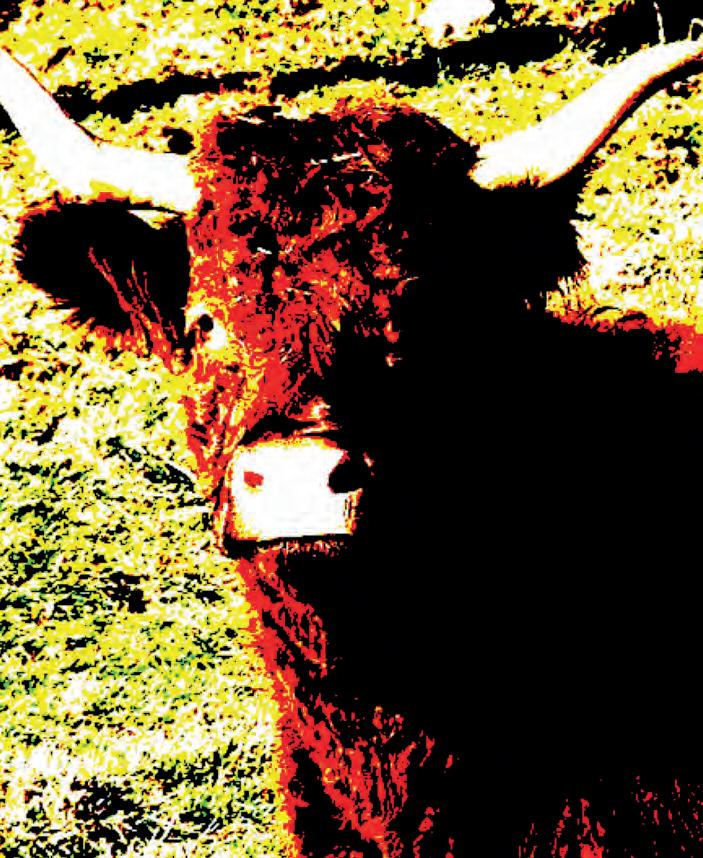
Salers bulls are efficient breeders and sire calves of moderate birth weight, with a strong will to live and good growth. USMARC studies have confirmed that Salers is the highest marbeling Continental breed, have

a large ribeye area and a leaner carcass (less fat thickness) than British breeds. Salers cross steers perform well in feedlots and have exceptional carcass yield and quality.
The Salers breed is one of only three breeds evaluating data on docility and through the efforts of its breeders has improved this trait dramatically in recent years. The genetic trend for Salers has been very positive from a breed average of near zero in 1992 to the current breed average EPD of over +8.0.
Excellent feet and legs contribute to admirable longevity. All of these traits combined, have made Salers the choice of many commercial cattlemen striving to maximize production without increasing management or labour costs. Salers are a balanced breed, which is key to optimizing all aspects of beef production.
Salers were first imported into Canada in 1972 with the Salers Association of Canada being established in 1973. Canada continues to be an excellent source for Salers genetics worldwide.
For more information about the Salers breed, go to the website of the Salers Association of Canada: http:// www.salerscanada.com





The Shorthorn breed had its founding about 225 years ago in Durham County in North East England. Shorthorn cattle are medium framed with mature females in the 1400 -1600 pound range and bulls ranging from 2200 – 2400 pounds in working condition. They are available both horned and polled with homogeneous polled genetics also available. The main colour variations are solid red, red with white markings, and roan and white, which gives commercial producers several different options to select from to suit their situations.
Shorthorn genetics have always provided a strong maternal trait. The Shorthorn female, purebred or crossbred, has long been sought after for its early maturity, fertility, ease of calving, milk production, longevity and docility. Carcass traits have been an area where the exotic or terminal breeds have excelled.With the more recent return and focus on a moderate carcass with consistent superior marbling, the carcass traits of the Shorthorn breed have become more popular. Feedlot tests reveal that Shorthorn influenced cattle reach the optimum carcass weight at an earlier age with a higher percentage of AA+ marbling. While exotic breeds will claim more muscling and larger rib eyes they cannot compete with the consistent, well marbled, high yielding Shorthorn carcasses.
Today’s Canadian Shorthorns continue to prove that they play a very important role in the future of the beef industry. While many breeds portray themselves as being balanced and versatile, none of them compare to the ability of Shorthorn genetics to adapt and improve in a variety of crossbreeding situations.
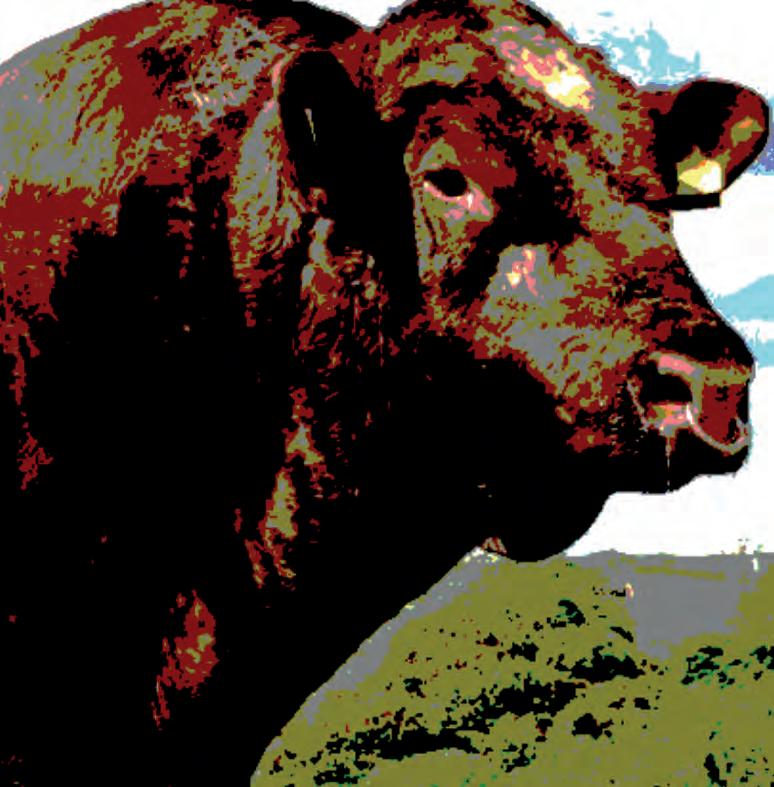
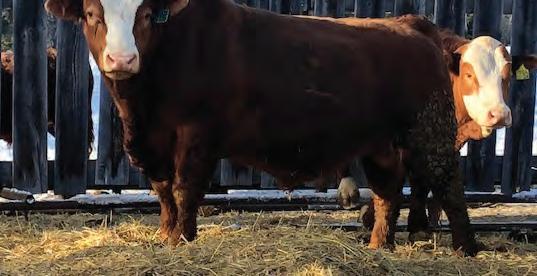


For more information about the Shorthorn breed, go to the website of the Canadian Shorthorn Association: http:// www.canadianshorthorn.com


“Marketing Purebred cattle means making the customer the most important part of your business”

INTRODUCTION
Marketing in every type of agricultural enterprise is becoming increasingly important for producers to have pro table and thus sustainable business operations. Angie Denton, editor of Hereford World, states “Purebred breeders spend hours trying to gure out the perfect mating or investigating ways to manage their land or cattle better. Marketing is something that does not come easily for some producers, and, in many cases, takes second place to everything else a producer does. But marketing experts say the most successful business people indicate, the customer is their business.” This pamphlet is being produced to encourage the junior members to become knowledgeable marketers; as, this skill will become the most important factor for future success in the Purebred Business.
Why marketing? Why not just better genetics, rotational grazing, or something else? Because marketing is essential to attracting customers and making sales, and that makes all the rest of the things a purebred business does possible. Every hour spent thinking about and working on marketing usually yields a bigger bottom-line return than the time you spend on other aspects of the business. Marketing makes you focus on customers and your customer base determines nancial success.
Things Marketing can do for you and your Purebred business:
• Increase customer loyalty and commitment to your breeding program and generate positive word of mouth from your customers
• Attract new customers to grow your business
• Helps you to expand your business to achieve income levels necessary for nancial success i.e. pro tability
• Fend o rival Purebred breeders from other breeds
• Promote your breeding program, your farm or ranch, and your business philosophies.
Marketing comes down to your customer and the relationship between you and your customers. Marketing is all about successful relationships. First, and always, make sure you’re building a relationship so you have committed customers who care about you and your genetics.
1. Acknowledge the customer as a person – an individual with a name, a life, needs and concerns. Take the time to show appreciation for their business.
2. Learn everything you can about each of your customers, their families, their farm or ranch, and their business goals.
3. Ask each customer what they want from you. Determine their expectations.
4. Make it easy to do business with you and always keep your word.
Without a strong relationship and a committed customer, you’re just selling a commodity.
To create a long lasting and pro table relationship with as many customers as possible, you need to understand your customers. This sounds obvious, but how much do you really know about your customers and potential customers? Your customers care about certain attributes or the things they believe are important when deciding whether to buy or whether they like what they bought. A simple exercise is to develop a list of attributes or speci c factors your customers considers when deciding on a source of Hereford genetics. For example a list of attributes might include the following;
• Breeder reputation
• EPD information
• Temperament
• Breeders guarantee
• Pigmentation/Red necks
• Frame score
• Blood-lines
• Feet and legs, soundness
• Location of the breeder
• Customer service
• Calving ease/birth weights
Once you have developed your list, then start the process of rating each attribute by how important it is to each customer. Some attributes will matter more too some customers than to others, and you may be surprised when doing your ratings, based on customer feedback, on what is most important for each customer. You may also end up adding some attributes to your list that you did not think were initially important. The purpose in going through this exercise is to make sure you know which attributes matters most to the customer you care about and also for future customers. You need to keep these attributes in mind in all future marketing e orts and also in discussions with your customers. And you’ll be looking for ways to be even better on the key attributes whenever you can, as, they’re going to be important, as you build stronger connections with customers and increase customer loyalty to you.
Knowing what customers like is one thing, but succeeding in the market is quite another. It just isn’t as simple as running an ad that shows pictures of your select animals. You have to be clearly di erent and better, at least in one or a few key areas. This can be a challenge. You may not be aware of this, but your breeding program will have certain qualities and strengths that will help you achieve some success in selling breeding stock. You can simply amplify and communicate these strengths through your marketing to achieve considerably more success. You have to make sure you’re fully aware of your breeding program’s strongest qualities and then be ready to leverage them in every aspect of your marketing.
To explore your greatest strengths and nd out what will give your marketing the greatest power to pull customers to you, take the time to list your strengths and any special qualities you or your program has to o er. For juniors starting out in the business, you can plan ahead and think about what strengths you will want to focus on, in developing your herd or purchasing animals. You can determine how you plan to di erentiate yourself in the market and then develop your genetics and program accordingly.
Upon making a good list of your strengths, then rate yourself on each one to determine which ones are the strongest and make you special or unique in the business. Hopefully some of your strongest qualities will overlap with the high priority attributes that customers want, and then you can promote these desirable strengths above the others.
You’re going to succeed in marketing on the strength of your breeding programs best qualities and your special brilliance, not by trying to match competitors or being as good as average.
Focus on what makes your breeding program special and on what your customers consider important. When you do, you’re building the elements of customer loyalty and strengthening your bonds with your customers, not to mention making your marketing a success.

A marketing program is a coordinated, thoughtfully designed set of activities that help you achieve your marketing objectives. Your marketing objectives will include revenue targets that t your strengths, the availability of resources, and allows you to be pro table. In order to build strong customer relationships and maximize sales, you need to put every possible marketing tool to work for you. Marketing is a broad eld, including many elements, such as advertising, logo design, web-sites, brochures, customer service, sales calls, and eld days. The more tools, the better. But the variety of choices makes getting organized and focused hard. To help with this exercise, there are some basic
methods to organize a marketing program.
If you take any marketing class, they will always discuss the “Five P’s” for the ve broad areas to accomplish marketing goals. These apply to the cattle business as well and include; Product, Price, Placement, Promotion and People.
Product: The product is what you sell, be it an animal, or a breeding program. Thought and plans have to be developed around your breeding program to improve quality or achieve customer needs. Any improvements in quality usually translate into gains in sales, plus any breeding program designed to meet identi ed customer needs, should increase sales.
Price: This is one of the most di cult areas in a marketing program. The place to start is knowing your cost of production, which is determined by the age and type of animal you plan to market each year. For example there will be di erent costs of production in selling yearling bulls versus two year old bulls. Breeders also need to determine if they are going to retain animals after they are sold, provide free delivery, volume discounts, and payment plans. These costs have to be incorporated into your budgets.
Placement: In the cattle business this means where and when you present your cattle to customers. Again in your plans, you need to decide if you are going to have a production sale, participate in consignment sales, and attend shows. Often other Purebred breeders become good customers, based on contacts made at shows.
Promotion: It’s all in the sales activities, advertising, barn displays, signage, web pages and any other communications designed to inform and persuade people about your cattle and program. The goal of all promotions is to encourage people to want to buy your cattle.
One of the best, and most neglected promotional tools, is a proper gate sign.
People: In the Purebred cattle business, which, is often described as a people business, and because relationships are very important, this area of marketing is very important. The best people to market cattle are the owners; however, much thought needs to be applied in situations where herdsmen, cattle tters, and sales management personnel are involved in the cattle operation. The personal connection between your employees and consultants with your customers can be a powerful marketing force, but it can also be the opposite if the wrong people are involved.
The way to bene t from the 5P’s is to annually look at weaknesses and strengths in each of the ve areas. Then try and eliminate the weaknesses and make your strengths even stronger.
A marketing plan lays out your analysis of the situation in your market area, along with your strengths and how you’ll use the various elements of your marketing mix to implement the strategy or plans. It also has sales projections and a budget. A good plan is always welcomed by your banker. Each year do an analysis of your past year to determine how well you achieved the plan and then develop a new plan for the next year of business, using the results and your experiences to develop budgets, which will become more accurate over time.
A. Situation Analysis – what’s happening in the cattle business, trends in the Hereford business, sales by customer for the current year and compared to past years, areas of business growth and decline, review of budgets and potential for new revenues, and review of costs of production.

B. Review of customer attributes or areas of importance in sourcing breeding stock. Review of the strengths and weaknesses of your breeding program. Figuring out what you do best and what your customers like most.
C. Plans and actions for the 5P’s.
D. Budgets and time-lines.
Reprinted by permission by the Canadian Junior Hereford Association, 5160 Skyline Way NE Calgary, Alberta T2E 6V1
Toll-free: 1-888-8-FOR-CHA Toll-free fax: 1-888-8-CHA-FAX e-mail: herefords@hereford.ca website: www.hereford.ca

EPDs are calculated using pedigree, performance and genomic data. Canadian Angus members participate in the voluntary Performance Program through which they collect and submit performance data on fertility, calving ease, growth, structure, carcass quality, and feed efficiency for their calves. A big thank you to all our members who take the time to measure and record this data; without you we cannot generate the genetic selection tools that we do. Many members have started measuring and submitting phenotypes for the new traits introduced here. As you start calving, please do not forget to record teat and udder scores on your cows.
EPDs are a genetic selection tool that some producers appreciate and use to select their bulls.
CANADIAN ANGUS ASSOCIATION GENETIC EVALUATION DEFINITIONS

Production EPDs:
Calving Ease Direct (CED) EPD describes the percentage of expected unassisted births when a bull is exposed to first-time heifers. The higher the number, the higher the probability that first-time heifers bred to the bull in question will calve with no assistance. The EPD predicts the average difference in ease with which a sire’s calves will be born when he is bred to first-calf heifers.
Birth Weight EPD (BW) EPD describes in pounds the difference in expected progeny weight, on average. A bull with a BW EPD of +4 will, on average, sire calves that are 2 pounds heavier than a bull with a BW EPD of +2 (given equal management).
Weaning Weight EPD (WW) EPD describes in pounds the difference in expected weaning weight in progeny, on average. WW EPD is a predictor of a sire’s ability to transmit weaning growth to his progeny compared to that of other sires. A bull with a WW EPD of +50 will sire calves that are, on average, 20 pounds heavier at weaning than a sire with a WW EPD of +30 (given equal management).
Yearling Weight EPD (YW) EPD describes in pounds the difference in expected yearling weight in progeny, on average. YW EPD is a predictor of a sire’s ability to transmit post weaning growth to his progeny compared to that of other sires. A bull with a YW EPD of +100 will sire calves that are, on average, 30 pounds heavier at weaning than a sire with a WW EPD of +70 (given equal management).
Residual Average Daily Gain (RADG) EPD describes an animal’s ability to grow post weaning on a constant amount of feed. RADG EPD, expressed in pounds per day, is a predictor of a sire’s genetic ability for postweaning gain in future progeny compared to that of other sires, given a constant amount of feed consumed. A bull with an RADG EPD of +1.5 will sire calves that, on average, will grow 1 extra pound per day more than calves from another bull with an RADG EPD of 0.5—on the same amount of feed.
Dry Matter Intake (DMI) EPD describes the feed intake potential for weaned calves from one sire compared to the feed intake potential of calves from another sire. This EPD is expressed in pounds per day. Weaned calves from Sire A with a DMI EPD of 0.50 will eat approximately 0.5 pounds of dry matter a day more than weaned calves from Sire B with a DMI EPD of 0.00. This EPD should also be used in conjunction with a growth EPD, such as YW EPD, as unlike RADG EPD, it does not include a growth component. Used independently of a growth EPD the DMI EPD selects solely for appetite.
Scrotal Circumference EPD (SC) EPD describes the difference in average scrotal circumference in sons. Expressed in centimetres,
a sire with an SC EPD of 1.2 will, on average, have sons with scrotal circumference that is 1 centimetre larger than the sons from a sire with an SC EPD of 0.2. SC EPD has also been correlated with daughter’s age at puberty and progeny fertility.
Docility (Doc) EPD is expressed as a difference in yearling cattle temperament, with a higher value indicating more favourable docility. It predicts the average difference of progeny from a sire in comparison with another sire’s calves. In herds where temperament problems are not an issue, this expected difference would not be realized.
Claw Set (Claw) EPD is expressed in units of claw-set score, with a lower EPD being more favourable indicating a sire will produce progeny with more functional claw set. Ideally, toes are symmetrical, even and appropriately spaced.
Foot Angle (Angle) EPD is expressed in units of foot-angle score, with a lower EPD being more favourable indicating a sire will produce progeny with more ideal foot angle. The ideal is a 45-degree angle at the pastern joint with appropriate toe length and heel depth.
Carcass EPDs:
Carcass Weight (CW) EPD is expressed in pounds and is a predictor of the differences in hot carcass weight of a sire’s progeny compared to progeny of other sires. A bull with a CW EPD of +30 will sire calves that, on average, will result in 10 pounds more hot carcass weight than the progeny of a bull with CW EPD of +20.
Marbling (Marb) EPD describes the marbling potential of calves from one bull compared to the calves from another bull, given the same management. This EPD is expressed as the difference in grade score. Given the same management, the calves from a bull with a Marb EPD of 0.6 will marble ½ a grade score better than the calves from a bull with a Marb EPD of 0.1.
Ribeye Area (RE) EPD describes in square inches the difference in ribeye area of a sire’s progeny compared to progeny of other sires.
Fat Thickness (Fat) EPD expressed in inches, describes the differences in back fat thickness at the 12th rib (as measured between the 12th and 13th ribs) of a sire’s progeny compared to progeny of other sires.
Maternal EPDs:
Heifer Pregnancy (HPG) EPD is a selection tool to increase the probability or chance of a sire’s daughters becoming pregnant as first-calf heifers at first exposure. A higher EPD indicates a higher probability of conception.
Calving Ease Maternal (CEM) EPD describes the probability of not requiring assistance when a bull’s daughters calve for the first time. The higher the EPD, the higher the probability that a bull’s daughters will not require assistance at calving time.
Milk EPD describes, in pounds, the portion of a calf’s weaning weight attributed to milk and mothering ability. On average, daughters from a bull with a Milk EPD of +20 will contribute 5 pounds more to their calves’ weaning weight than the daughters of a bull with Milk EPD of +15. Milk EPD is a threshold trait that should be maintained at a moderate level dependent on the management and environment of the herd.
Mature Weight (MW) EPD expressed in pounds, is a predictor of the difference in mature weight of daughters of a sire compared to the daughters of other sires.
Mature Height (MH) EPD expressed in inches, MH EPD is a predictor of the difference in mature height of a sire’s daughters compared to daughters of other sires




Current - All calves born in the last 2 years (2021 - 2022)
- All sires and dams with a calf reported in the last 2 years
Percentiles for all active Gelbvieh sires (American Gelbvieh Association - May 3, 2022)
Gelbvieh active sires are defined as those having a progeny born between Jan1/19 and May 12/22 and carries an AGA classification of FB, PB, BA, PC or HB
American Gelbvieh Association (January 4, 2023)

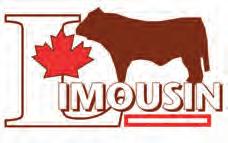




Set to begin its eighth season as the nation’s premier bull riding series, PBR (Professional Bull Riders) Canada’s nationally-televised Cup Series, presented by Wrangler, will hold nine events throughout 2023, visiting nine cities across Alberta, British Columbia, Manitoba and Saskatchewan.
For the third consecutive season, the PBR Canada National Finals will be held in Edmonton, Alberta, at the state-of-the-art Rogers Place, again awarding a recordtying $175,000, including a $50,000 bonus to be presented to the 2023 PBR Canada Champion.
The elite Cup Series, presented by Wrangler, features Canada’s top bull riders, alongside some of the PBR’s top international athletes, squaring off against the rankest bucking bulls in North America. Fans will witness exhilarating 8-second rides and wrecks throughout the action-packed event as the PBR’s courageous riders face off against their 2,000-pound, animal-athlete opponents.
PBR Canada’s Cup Series is televised nationally on the TSN family of channels, bringing the heart-pounding action to fans across the nation. The tour is also brought to United States-based fans on the organization’s Western lifestyle channel PBR RidePass on PlutoTV.
The 2023 season will launch on February 4 in Red Deer, Alberta, with the PBR Cross Country Canada Classic at Peavey Mart Centrium.
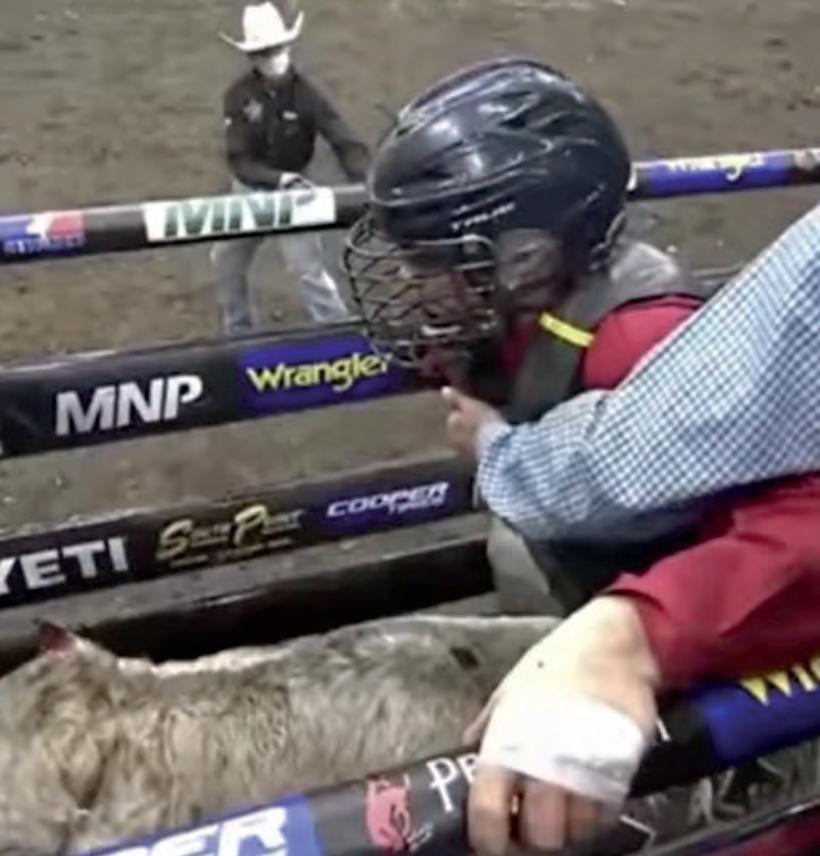
AmericanSalersAssociation(January4,2023)


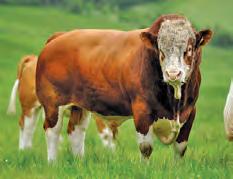

Current Population - all calves born in the last 2 years (2021-2022)
Active Sire - any sire with a calf reported in the last 2 years (2021-2022)
Active Dam - any dam with a calf reported in the last 2 years (2021-2022)
Percentiles show where an animal stands within the Simmental population. The following percentiles are based on CSA current calves (2021-2022)
Canadian Simmental Association (January 4, 2023)

Mar 20RR Forty Angus
March 24/25Binks Angus Farm
March 24/25Lazy B Livestock
Sat, Mar 25North Point Angus
Sat, Mar 25D Dutchik Black Angus
Sat, Mar 25Lakeroad Black Angus
Apr 1/2 Silent K Stock Farms
Sat, Apr 8 VJV Dawson Creek
to Rio Grande Sale
the Ranch, Rio Grande, AB
of the Peace Multi Breed Bull SaleDLMS Farm Gate Timed Auctions
of the Peace Multi Breed Bull SaleDLMS Farm Gate Timed Auctions
Bull Sale Evergreen Park, Grande Prairie, AB
“Bull Power” Bull Sale
Dawson Creek, BC
“Bull Power” Bull Sale VJV, Dawson Creek, BC
Annual Angus Bull Sale
DLMS Farm Gate Timed Auctions
VJV Dawson Creek All Breed Bull SaleVJV, Dawson Creek, BC
Sat, May 20VJV Dawson Creek Last Chance Bull & Heifer Sale
VJV, Dawson Creek, BC
Heart Valley Angus Off the Ranch by Private Treaty Wanham, AB
M-KJOS Angus Off the Ranch by Private Treaty Fort St. John, BC
Mountain Side Angus Off the Ranch by Private Treaty Beaverlodge, AB
Rafter SJ Angus Off the Ranch by Private Treaty Montney, BC
Sadlier Cattle Co. Off the Ranch by Private Treaty Hines Creek, AB
Schulz Angus Off the Ranch by Private Treaty Spirit River, AB
Silver Willow Ranch Off the Ranch by Private Treaty Sexsmith, AB
Smoky River Red Angus Off the Ranch by Private Treaty Sexsmith, AB
CHAROLAIS
Sat, Jan 28 M.C. Quantock
Sun, Feb 26Pro-Char Charolais
Tues, Mar 7Briar Ridge Stock Farm
Fri, Mar 10 JayDawn Farms
Tues, Mar 14Eight Way Charolais
Thurs, Mar 16Spruce View Charolais
Thurs, Mar 16Valanjou Charolais
Sat, Mar 18Lazy S Charolais
March 24/25Landaker Charolais
Sat, Mar 25Kaiser Charolais
Sat, Apr 8 VJV Dawson Creek
Sat, May 20VJV Dawson Creek
GELBVIEH
Tues, Feb 14Rocky Top Gelbvieh
Tues, Feb 14Royal Western Gelbvieh
Sat, Apr 8 VJV Dawson Creek
Sat, May 20VJV Dawson Creek
Fri, Mar 3 Chittick Farms
Tues, Mar 7Briar Ridge Stock Farm
“Canada’s Bulls” Bull Sale
Pro-Char Charolais Bull Sale
Third Annual Bull Sale
Northern Classic Bull Sale
Annual Bull Sale
Exhibition Grounds, Lloydminster
On the Ranch, Glenevis, AB
VJV, Dawson Creek, BC
Evergreen Park, Grande Prairie, AB
VJV, Dawson Creek, BC
Northern Impact Charolais Bull SaleNCLE, Clyde, AB
Northern Impact Charolais Bull SaleNCLE, Clyde, AB
Lazy S Charolais Annual Bull SaleVJV, Dawson Creek, BC
Heart of the Peace Multi Breed Bull SaleDLMS Farm Gate Timed Auctions
VJV “Bull Power” Bull Sale
VJV, Dawson Creek, BC
VJV Dawson Creek All Breed Bull SaleVJV, Dawson Creek, BC
Last Chance Bull & Heifer Sale
2023 Draft Picks Bull Sale
VJV, Dawson Creek, BC
Western Gelbvieh, Red Deer Cty, AB
the Ranch, Mayerthorpe, AB
Dawson Creek, BC
March 24/ 25Reber’s Polled HerefordsHeart of the Peace Multi Breed Bull SaleDLMS Farm Gate Timed Auctions Whiskey Jack Black Herefords & Simmentals Off the Ranch by Private Treaty
AB
SaleVJV, Dawson Creek, BC
Sat, May 20VJV Dawson Creek
SIMMENTAL
Sat,
Sat,
25Albrecht Farms
Sat, Feb 25Tri K Cattle
Mon, Feb 27KSL Simmentals
Wed, Mar 1Clearwater Simmentals
Wed, Mar 1Gardner Liverstock
Wed, Mar 1GB Farms
Wed, Mar 1Kruger Farms
Simmentals/Albrecht FarmsOn the Ranch, Tri-K Simmentals, Beaverlodge, AB
Simmentals/Albrecht FarmsOn the Ranch, Tri-K Simmentals, Beaverlodge, AB
Simmentals Bull & Female SaleOn the Ranch, Beaverlodge, AB
Cow Palace, Olds, AB
Cow Palace, Olds, AB
Event Bull and Female Sale
Wed, Mar 1Southpaw Cattle CompanyThe Event Bull and Female Sale
Wed, Mar 1Wolfe’s Fleckvieh
Fri, Mar 3 GRA-TAN Farm
Event Bull and Female Sale
Cow Palace, Olds, AB
Cow Palace, Olds, AB
Cow Palace, Olds, AB
Fri, Mar 10 Willow Creek SimmentalsNorthern Classic Bull Sale Evergreen Park, Grande Prairie, AB
Sat, Mar 11Brandl Cattle Co. Brandl Cattle Co. Bull Sale On the Ranch, Jarvie, AB
Tues, Mar 14SIBL Simmentals On Target Bull & Female Sale Ag Barn, Barrhead, AB
Tues, Mar 21Crystal Springs Ranch North Country Ranchland Bull SaleVJV, Dawson Creek, BC
Tues, Mar 21Rosefield Simmentals North Country Ranchland Bull SaleVJV, Dawson Creek, BC
March 24/25Blazin’ J Simmentals Heart of the Peace Multi Breed Bull SaleDLMS Farm Gate Timed Auctions
Sat, Mar 25Lakeroad Simmentals Annual Bull Sale VJV, Dawson Creek, BC
Sat, Apr 8 VJV Dawson Creek VJV Dawson Creek All Breed Bull SaleVJV, Dawson Creek, BC
Sat, May 20VJV Dawson Creek Last Chance Bull & Heifer Sale VJV, Dawson Creek, BC
KMR Simmentals Off the Ranch by Private Treaty Grovedale, AB
Moonlite Farm Off the Ranch by Private Treaty Fairview, AB
O Double E Simmentals Off the Ranch by Private Treaty Beaverlodge, AB
Willowdale Simmentals Off the Ranch by Private Treaty Valleyview, AB
Whiskey Jack Black Herefords & Simmentals Off the Ranch by Private Treaty Whitelaw, AB
SPECKLE PARK
Desert Acres Speckle ParkOff the Ranch by Private Treaty Fort St. John, BC
Gunn Lake Speckle ParkOff the Ranch by Private Treaty Beaverlodge, BC
Rimrock Ranch Off the Ranch by Private Treaty Dawson Creek, BC

CRESTLAND FARMS BULL SALE
Tuesday, February 28th, 2023 | 1:00 p.m. (BC Time)
FALLEN TIMBERS “SPRING SELECT” BULL SALE
Bull Viewing & BBQ – Friday, March 3, 2023 | 4:00 p.m. (BC Time)
Spring Select Bull Sale – Saturday, March 4, 2023 | 1:00 p.m. (BC Time)
BRIAR RIDGE STOCK FARMS BULL SALE
Tuesday, March 7, 2023 | 1:00 p.m. (BC Time)
8 WAY CHAROLAIS BULL SALE
Tuesday, March 14, 2023 | 1:00 p.m. (BC Time)
LAZY S CHAROLAIS BULL SALE
Bull Viewing & BBQ – Friday, March 17, 2023 | 4:00 p.m. (BC Time)
Bull Sale – Saturday, March 18, 2023 | 1:00 p.m. (BC Time)
NORTH COUNTRY RANCHLAND BULL SALE
Tuesday, March 21st, 2023 | 1:00 p.m. (BC Time)
VJV DAWSON CREEK “BULL POWER” BULL SALE
Guest Consignors:
David, Dallas & Jaycee Dutchik of David H McDougall Ranch
Donna Rowe of Lakeroad Black Angus | Gordon Harmon of Dry Creek Ranch
Barry Kaiser of Kaiser Charolais
Saturday, March 25th, 2023 | 1:00 p.m. (BC Time)
VJV LAST CHANCE ALL BREED BULL SALE

Featuring our May Bred Cow & Heifer Sale • Saturday, May 20th, 2023 | 1:00 p.m. (BC Time)
Bred Cow & Heifer Sale starts at 11:00 a.m. (BC Time)